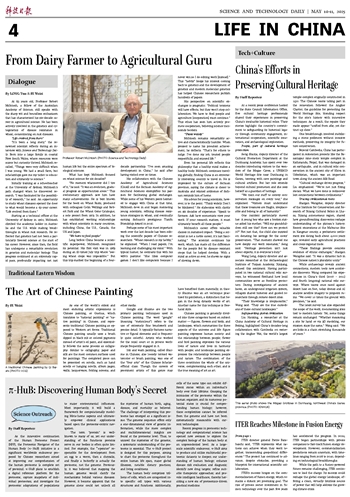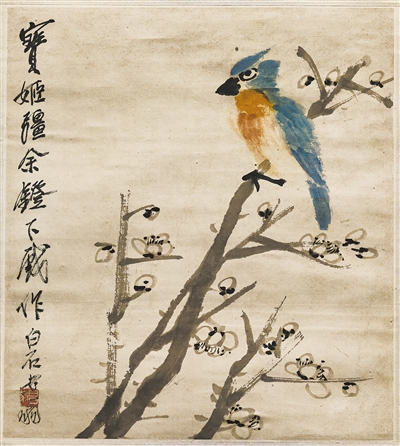
 |
| A traditional Chinese painting by Qi Baishi. (PHOTO: VCG) |
As one of the world's oldest and most enduring artistic expressions is Chinese painting, or Guohua, which translates to "national painting" or "native painting" in Chinese, and represents traditional Chinese painting as opposed to Western art forms. Traditional Chinese painting usually uses a brush dipped in black ink or colored pigments instead of artist's oil paint, and essentially follows the same process as calligraphy. Similar to calligraphy, paper and silk are the most common surfaces used for paintings. The completed piece can be presented on scrolls, such as hand scrolls or hanging scrolls, album pages, walls, lacquerware, folding screens, and other media.
Gongbi and Shuimo are the two primary painting techniques used in Chinese painting. The word "gongbi" (meaning "meticulous") refers to the use of extremely fine brushwork and precise detail. It typically features narrative or figural elements and is frequently quite colorful. Artists who worked for the royal court or in private workshops frequently engaged in it.
Ink and wash painting, called Shuimo in Chinese, also loosely termed watercolor or brush painting, was one of the "four arts" of the Chinese Scholar-official class. Though the careers of prominent artists of this genre may have benefited them materially, in theory Shuimo was an art technique practised by gentlemen, a distinction that began in the Song dynasty works of art. Another name for this technique is freehand style.
Chinese painting is generally divided into three categories based on subject matter — figures, flowers and birds, and landscapes, which summarizes the three aspects of the universe and life: figure painting expresses human society and the relationship between people; flower and bird painting expresses the various lives of nature and lives in harmony with people; and landscape painting expresses the relationship between people and nature. The combination of the three constitutes the whole of the universe, complementing each other, and is the true meaning of art as art.







